Example Networks in Computer Networks
Computer networking encompasses a diverse array of networks, each designed for specific purposes and utilizing various technologies. This section explores several key networks, including the Internet, ARPANET, NSFNET, mobile phone networks, wireless LANs (802.11), RFID, and sensor networks. By examining these examples, we can gain a deeper understanding of the variety and complexity inherent in modern networking.
The Internet
The Internet is perhaps the most well-known network, but it is not a single entity; rather, it is a vast collection of interconnected networks that communicate using standardized protocols. The Internet has evolved organically over decades, growing from a small research project into a global phenomenon that connects billions of devices.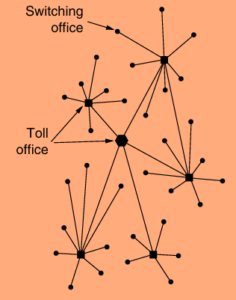
History and Evolution
The origins of the Internet can be traced back to the ARPANET, developed in the late 1960s by the U.S. Department of Defense. The ARPANET aimed to create a resilient communication system capable of surviving potential disruptions, such as a nuclear attack. Key developments included the introduction of packet-switching technology, which allowed data to be broken into packets and sent independently across the network.
The first four nodes of the ARPANET were established in December 1969 at UCLA, UCSB, SRI, and the University of Utah. This initial network demonstrated the feasibility of packet switching and laid the groundwork for future developments.
Architecture of the Internet
The architecture of the Internet has evolved significantly over the years. It is characterized by a hierarchical structure that includes:
→ Internet Service Providers (ISPs): Users connect to the Internet through ISPs, which provide access and connectivity. ISPs can be local, regional, or national in scope.
→ Internet Exchange Points (IXPs): ISPs peer with each other at IXPs to exchange traffic, allowing data to flow between different networks.
→ Tier 1 ISPs: These are large companies that operate extensive backbone networks, providing connectivity to other ISPs and forming the core of the Internet.
The Internet’s architecture is designed to be robust and scalable, accommodating the ever-increasing number of devices and users.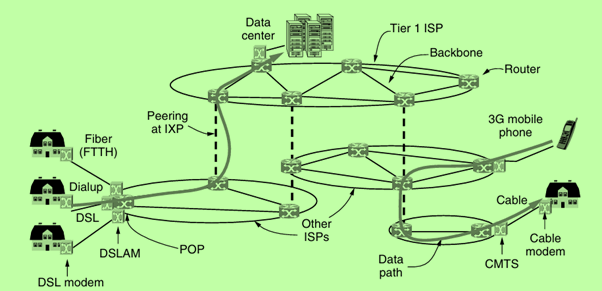
ARPANET
The ARPANET (Advanced Research Projects Agency Network) was the first operational packet-switching network and a precursor to the modern Internet. Funded by the U.S. Department of Defense, it aimed to create a communication system that could withstand disruptions.
Key Features
→ Packet Switching: ARPANET utilized packet-switching technology, allowing data to be divided into packets that could be sent independently across the network. This approach increased efficiency and reliability.
→ First Nodes: The first four nodes of ARPANET were established in December 1969, connecting four universities. This initial setup demonstrated the feasibility of packet switching and laid the groundwork for future developments.
Architecture
The ARPANET’s architecture included:
→ Interface Message Processors (IMPs): These were the packet-switching nodes that connected hosts to the network. Each IMP was connected to at least two other IMPs for redundancy.
→ Host-IMP Protocol: Communication between hosts and IMPs was facilitated by specific protocols that allowed for reliable data transfer.
The ARPANET’s design and implementation were groundbreaking, setting the stage for the development of the Internet.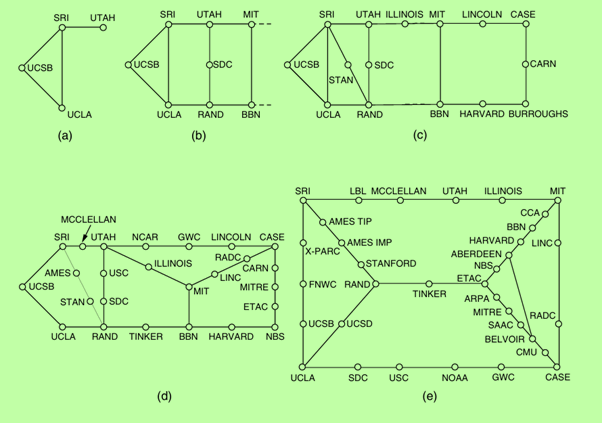
NSFNET
The NSFNET (National Science Foundation Network) was established in the mid-1980s as a successor to ARPANET, aimed at providing broader access to networking resources for educational and research institutions across the United States.
Key Features
→ Backbone Network: NSFNET served as a backbone network connecting various regional networks and supercomputer centers, facilitating collaboration and data sharing among researchers.
→ TCP/IP Adoption: NSFNET was one of the first large-scale networks to adopt TCP/IP protocols, which became the standard for Internet communication.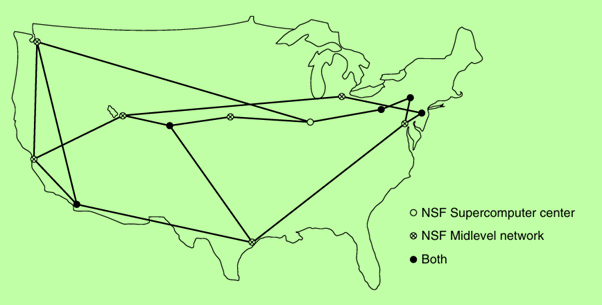
Architecture
The NSFNET’s architecture included:
→ Regional Networks: NSFNET connected to about 20 regional networks, allowing thousands of universities and research institutions to access supercomputing resources.
→ Fuzzballs: The network utilized LSI-11 microcomputers (known as fuzzballs) to manage connections and routing.
NSFNET played a crucial role in expanding access to networking resources and laid the foundation for the commercialization of the Internet.
Third-Generation Mobile Phone Networks
Mobile phone networks have become the most successful networks globally, with over four billion subscribers. The evolution of mobile networks includes several generations, each introducing new technologies and capabilities.
Generations of Mobile Networks
1G: Analog systems for voice calls (e.g., AMPS).
2G: Digital systems that introduced text messaging (e.g., GSM).
3G: Introduced broadband digital data services, with standards like UMTS providing higher data rates.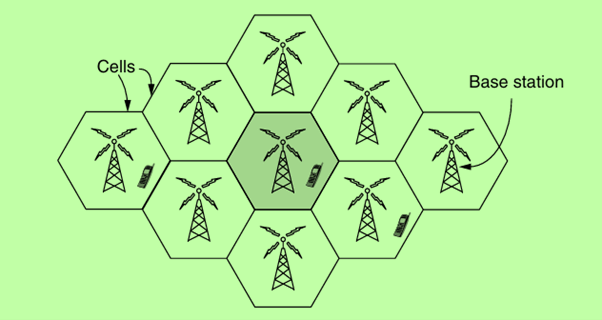
Architecture of 3G Networks
The architecture of 3G networks includes:
→ Radio Access Network: Comprising base stations and controllers that manage radio communication.
→ Core Network: This includes the circuit-switched and packet-switched domains, enabling voice and data services. The core network connects to the Internet and other networks, facilitating seamless communication.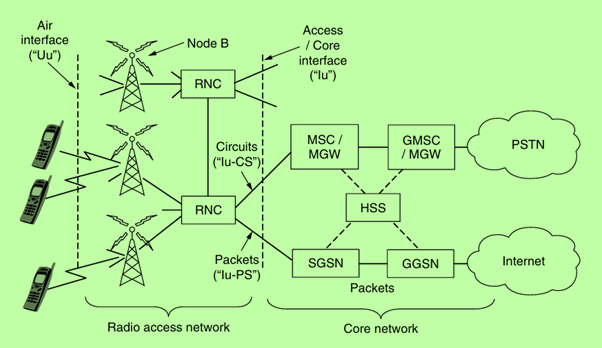
Wireless LANs (802.11)
Wireless Local Area Networks (WLANs), commonly known as Wi-Fi, have revolutionized how devices connect to the Internet within a limited area, such as homes, offices, and public spaces.
Key Features
→ Wireless Communication: WLANs use radio waves to transmit data, allowing
devices to connect without physical cables.
→ Standards: The IEEE 802.11 standards define the protocols for implementing WLANs, with various versions offering different speeds and ranges.
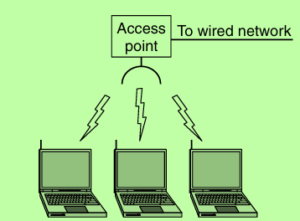
Architecture
The architecture of a typical WLAN includes:
→ Access Points (APs): These devices connect wireless clients to the wired network, acting as a bridge between the two.
→ Client Devices: Laptops, smartphones, and tablets that connect to the WLAN to access network resources and the Internet.
WLANs provide flexibility and convenience, enabling users to connect multiple devices without the constraints of wired connections.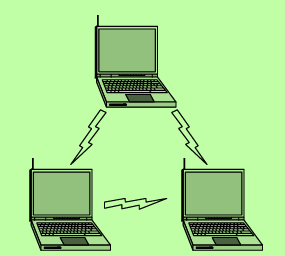
RFID Networks
Radio Frequency Identification (RFID) networks utilize electromagnetic fields to automatically identify and track tags attached to objects. RFID technology is widely used in various applications, including inventory management, supply chain tracking, and access control.
Key Features
→ Tags: RFID tags contain a microchip and an antenna, allowing them to transmit data to RFID readers.
→ Readers: These devices emit radio waves to communicate with tags, capturing the information stored on them.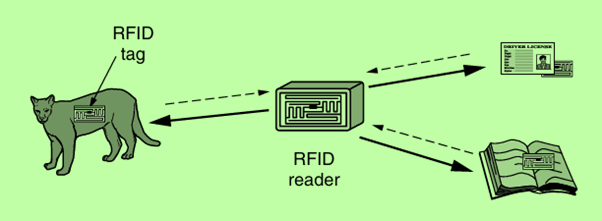
Architecture
The architecture of an RFID network consists of:
→ RFID Tags: Passive or active tags that store data and respond to reader signals.
→ RFID Readers: Devices that capture data from tags and send it to a backend system for processing.
→ Middleware: Software that processes the data collected from RFID readers, integrating it with existing systems.
RFID networks enhance efficiency and accuracy in tracking and managing assets.
Sensor Networks
Wireless sensor networks (WSNs) consist of spatially distributed autonomous sensors that monitor physical or environmental conditions, such as temperature, humidity, and motion. These networks are used in various applications, including environmental monitoring, smart cities, and healthcare.
Key Features
→ Sensor Nodes: Small, low-power devices equipped with sensors to collect data and communicate wirelessly.
→ Data Aggregation: Sensor networks often employ data aggregation techniques to reduce redundancy and conserve energy.
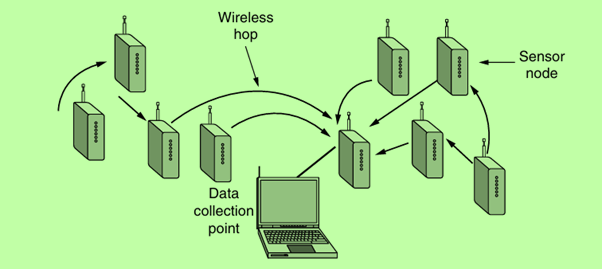
Architecture
The architecture of a sensor network includes:
→ Sensor Nodes: These nodes collect data and transmit it to a central processing unit or gateway.
→ Gateway: A device that connects the sensor network to the Internet or other networks, enabling data access and analysis.
→ Data Processing Unit: This component processes the data collected from sensor nodes, providing insights and actionable information.
Sensor networks play a crucial role in the Internet of Things (IoT), enabling real-time monitoring and control of various systems.
Conclusion
The exploration of example networks in computer networking reveals the diversity and complexity of modern communication systems. From the foundational ARPANET and NSFNET to the ubiquitous mobile networks, wireless LANs, RFID, and sensor networks, each network serves specific purposes and employs unique technologies. Understanding these networks is essential for grasping the intricacies of how data is transmitted and managed in our increasingly connected world. As technology continues to evolve, these networks will play an even more significant role in shaping the future of communication and information exchange
